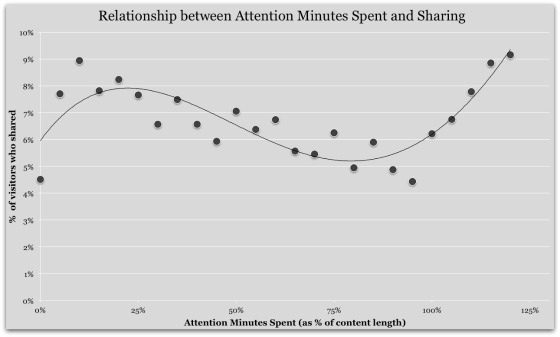When you’re in the process of developing a content strategy (and justifying budgets), you might wonder how often you need to post fresh content. The answer may seem very simple to someone who’s embraced the idea that smart content can fuel your entire sales funnel, but here’s an explanation of when more is more for those people who are on the fence:
The more content you post, the more likely people are to see it.
That’s an accurate answer, but you might agree it isn’t exactly a satisfying one. You may not have the bandwidth to flood the web with a fresh stream of content every day. Or you may have a hard time believing there’s enough relevant information in your field worth covering. It’s a tall order to churn out a steady stream of useful, actionable content 24 hours a day, 7 days a week – without repurposing, that is.
But it’s still true that brands should be trying to produce great content on a regular basis. When they can’t there are some techniques to keep in mind to maximize the content they do publish.
No matter what, Google likes fresh content
The single-most important question you should ask yourself when publishing content is: Does this web page provide the information the user was looking for? This is what Google rewards, and it uses hundreds of factors to arrive at the answer, but one that often goes without comment is freshness. Google has patented a system called Document Scoring Based on Document Content Update, and it helps give a numerical rank to pages based on how recent content is. Some benchmarks include:
• How long ago Google first discovered a page
• How recently a page was updated with new information
• How often a page is updated with new content
• How much meaningful or useful content (i.e. not advertisements) was changed
• How new inbound links correlate with updated content
• How fresh the pages that produce inbound links are
It’s not entirely clear how much this freshness rating impacts search rankings, but it absolutely plays a role in SEO performance. And the best way to fulfill Google’s freshness requirements is to blog often, write about relevant issues and update old content when appropriate. Google’s algorithms and freshness system are in place to give the best answers to users. A consistent content strategy ensures that subjects are up-to-date and useful.
Can’t publish daily? Post on these days to get results
There’s ample data about when to post content on the web. Why so much? Because it’s subjective and audience-dependent. But when you want to refine your publication schedule for the most success, first consider your ultimate goals. The most successful marketers start by determining what they want content marketing to accomplish and publish at times optimized for those moments.
Blog views peak at 11 in the morning, but it isn’t as if businesses can publish content just before lunch and call it a day.
So ask yourself: Do you want more traffic, period? Or are you hoping to boost engagement or improve your search rankings? According to research by HubSpot, blog posts receive:
• The most views on Mondays
• The most links on Thursdays
• The most comments on the weekend
Of course, we want all of these things. But it’s difficult to reconcile a content marketing strategy with an irregular posting calendar.
As far as posting throughout the day is concerned, the same model applies. A study by Impact Branding discovered blog views peak at 11 in the morning, but it isn’t as if businesses can publish content just before lunch and call it a day. The hour before noon accounts for most of the morning’s blog views, and there are smaller peaks throughout the afternoon and into the evening. A time-targeted but consistent stream, no matter its overall volume, guarantees that something new and fresh is live no matter when people come back to a site or conduct a Google search.
Just remember not to put all of a site’s content eggs into one chronological basket. Around 25 percent of all video plays on Facebook occur on Fridays. It’s possible to create a schedule that takes this fact into account and slates all videos for Friday publication, but it’s still best to keep content production consistent. Post videos throughout the week, but lean a little more heavily on Fridays to tip the scales in your favor. User behavior can turn on a dime as industries evolve and technology changes.
Even great content and ideal schedules will miss readers
As Robert Burns famously said, the best laid plans of mice and men often go wrong. So brands need to realize that there are no guarantees in the content marketing game. Sometimes, the most well-researched, professionally written and properly promoted content misses part of its intended audience.
For example, modern web readers skim written content, looking for bullets, links and bold terms that guide them toward the information they wanted in the first place. As a result, maximizing traffic by following an optimized schedule only tips the balance so far. Keeping a consistent stream of content available, even off peak consumption times, ensures that the readers who were skimming have a chance to consume similar relevant content when they actually choose to dive deeper.
However, after finally clicking and digging into content, readers aren’t guaranteed to remember it all. A study called Is Google Making Us Stupid? The Impact of the Internet on Reading Behavior found that web-oriented reading behaviors don’t just lead to less content consumption. They also affect comprehension and recall. People who read web content may have difficulty remembering every data point and argument, so a consistent and frequent publication calendar keeps ideas and evidence top-of-mind for online customers.
Even a perfectly targeted social strategy can only do so much for content’s chances of being seen. It’s easy to assume that the most interesting and useful content gets the most shares – and that’s true, up to a point. ChartBeat found that the likelihood a person will share content actually increases as the number of “attention minutes” they spend with it drops – unless they’ve read an entire piece or viewed a whole video from start to finish.
What does this mean for content creators? First, it should be taken as yet more evidence that just because something is getting a lot of shares doesn’t mean people are reading it entirely. This isn’t necessarily a bad thing – content that contains useful, intriguing or interesting information (based on headlines, meta descriptions and images) can get lots of shares and potentially go viral. Shares that come from readers who didn’t actually read still helps brands build awareness and reach readers who will actually read and convert, so the more shareable content companies publish, the
Daily content – A magic bullet for marketing?
Most brands aren’t able to do the type of research necessary to target the minute behaviors of their ideal leads, but it’s possible to make some generalizations. If you’re not serving up fresh content every day, it might be hard to keep up with publication deadlines and create a steady presence across the web and social networks.
All companies have to do to stay relevant, timely, fresh and top-of-mind among target audiences is to create content consistently. Social media users might balk at seeing dozens of updates every day in their news feeds, but blogs and news sections can be updated as needed.
Do you have other content marketing questions? Maybe we’ve already answered them!
• Why aren’t keywords as important anymore?
• Why do I have to include outbound links in my content?



